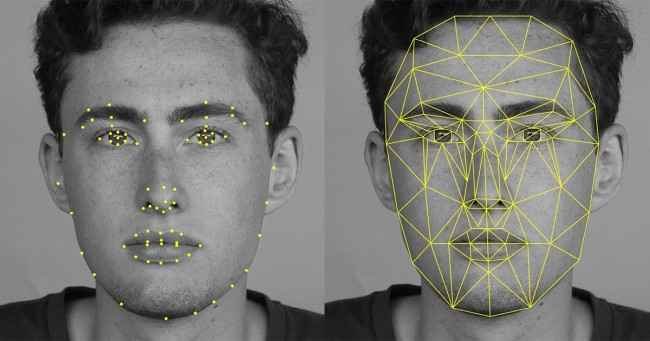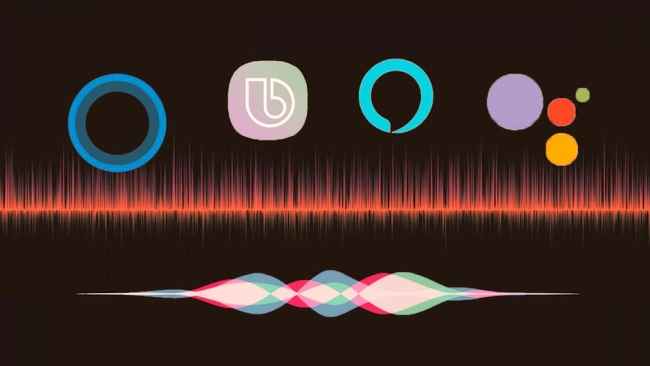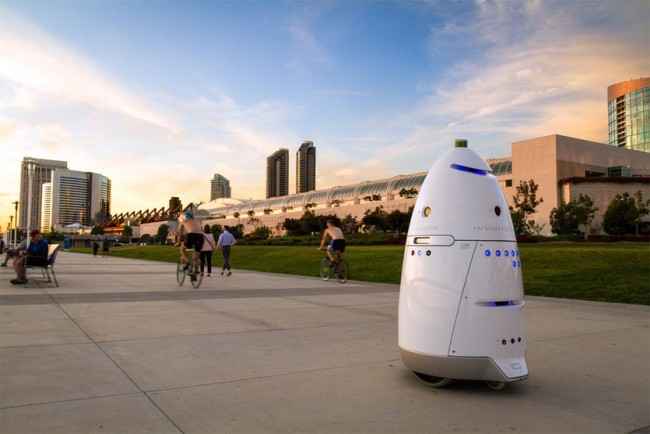18 applications of AI that you probably use every day

AI (Artificial Intelligence) is incessantly getting more sophisticated and pervasive with every passing day, if not minute. While it is often deemed as a staple for science fiction fans, its applications in day-to-day life are tremendous. You probably utilise AI and its faction, ML (Machine Learning), in more places than you can probably imagine. You’ve probably used AI to come across and read this article as well. Let’s look at 18 applications of AI that you probably use in your everyday life.
Gmail
Gmail categorises your email into different folders/locations by using AI
In 2016, Google’s email client, Gmail, racked up a total of one billion users worldwide. All of these users (and added users, by 2019) are using AI while accessing their Gmail account. Email filters in Gmail are courtesy AI, with emails getting sorted into folders like Primary, Social, Promotions, Updates, Forums and Spam. Gmail utilises AI to segregate the right emails in the corresponding folder and to ensure that emails landing in your ‘Primary’ inbox are genuine. Google even claims that its AI-powered filtering mechanism obstructs 99% of spam from infiltrating your inbox.
Another, more recent, application of AI in Gmail is Smart Replies. Smart Replies uses a predictive algorithm to mimic your personal style of writing and comes up with three, usually short, replies for any email you receive. The functionality is getting increasingly advanced and now has the ability to, sometimes, come up with more complex responses.
The ‘Nudge’ feature, which is also quite recent, uses AI to follow up on emails you may have forgotten or missed. With the help of AI, these emails are highlighted after a few days of disregarding it.
Social Media
Have you ever noticed that when you upload pictures on Facebook, the social media app or website automatically highlights faces of people and suggest friends to tag? This is accomplished via, *ding ding*, you got it right – AI. Facebook employs artificial neural networks – ML algorithms that power the facial recognition software. Facebook uses AI again to customise and personalise your newsfeed, as do many other social media platforms that have feeds – like Instagram. Facebook and other social media also use AI to show users targetted ads, but more on that later. Facebook also announced its AI-driven initiative – DeepText – which understands, almost with human-level accuracy, the textual context of multiple posts all over the social media. In Facebook Messenger, DeepText can hail an Uber from inside the app when you type “I need a ride”. Other applications of DeepText include removal of spam, helping celebrities or public figures sort through millions of comments to find the most relevant ones and more.
Instagram, on the other hand, uses ML to understand the contextual meaning of emojis. Instagram can auto-suggest emojis and emoji hashtags by figuring out the sentiments behind these emoticons.
Snapchat utilises AI to build a 3D mask for each person’s face and applies a dynamic filter on it
Snapchat uses machine learning for its famous filters. It detects a face, locates facial features, and creates a mesh or a 3D mask that can move along with the movements of your face using the capabilities of AI and ML.
It is not just these apps that utilise AI and ML on a regular basis, but most social media apps and sites including Twitter, LinkedIn, Pinterest, and more. Basically, AI successfully tailors your social media experience and encompasses you into something most people are victims of these days – a filter bubble. Being in this bubble which includes everything you like and all the content you want to consume is what makes social media so addictive.
Google’s predictive searches sometimes seem psychic since it often gets extremely close to what you want to search for, while at times, the predictive search gets it exactly right. How? AI. Utilising the data that Google garners about you like location, age, gender, and other personal details, the predictive search attempts to guess what you might be attempting to search for. This is seen in a long list of drop-down predictions that Google proffers its users when they begin typing a search term.
Google even uses AI-driven algorithm to study linguistics used in searches. The AI learns from results and adapts to understand and meet the needs or expectations of the user. For example – if someone is searching for the price of a laptop in India – Google will display a snippet at the very top of the search page which highlights the answer. This saves the searcher time and ensures that she/he does not have to traverse through an entire article to find the answer.
Online Shopping
The most basic form of AI usage in online shopping is for searches. When you search, Amazon for instance, for any product you wish to purchase, it returns a list of the most relevant products. Amazon states that its algorithm learns to amalgamate several reference features (past search patterns, purchases and more) and return a list of suitable products.
Customised recommendations curated by using AI
Recommendations, on the other hand, are big money-makers for online shopping sites like Amazon. AI is used to gather information about the customer’s preferences and buying habits, which in turn allow personalisation of their shopping experience by suggesting products specifically tailored to them. You see tabs such as ‘customers who viewed this item also viewed’ or ‘customers who bought this item also bought’ and an array of products under them. This is done by utilising artificial neural networks. A third of Amazon’s online sales come purely from recommendations, which is a testament to the power of this AI-powered feature.
Music services
Spotify’s ‘Discover Weekly’ playlist is also curated using AI
Music services such as Spotify and Google Play Music exploit AI to track your listening habits. They use the information they glean to recommend other tracks, artists and albums you might want to listen to. Some of these apps also take into account factors like weather, time, location and more to offer music that can set the mood for various activities and situations. For example, a music service might offer you a dance music playlist on a Friday or Saturday night, or soft acoustic music on a rainy day. Spotify creates daily playlists or mixes based on what you’ve been listening lately. The Spotify ‘Discover Weekly’ playlist is another popular feature on the app which has been made possible due to the technology.
Mobile banking
AI has been used quite aggressively by many banks to personalise user experience on their mobile applications. Mobile Banking apps utilise AI to provide alerts for bill payment and transfer prompts. Another way banks or financial institutions use AI is by sending alerts to the customer’s smartphone to help prevent fraud. If the algorithm calculates that there was an unusually large transaction made, or any other suspicious transaction, you will get a warning or an automated call on your device. This happens because AI has been employed to recognise unusual patterns in your spending routine.
Maps and navigation
Traffic alerts and fastest route derivation in navigation apps is possible due to AI
Maps and navigation are used by people almost on a daily basis. Whether you are using Google Maps, Apple Maps or other such services, you are actually using AI which interprets a sizeable number of data points that they receive to provides users with real-time traffic data. The magic of AI is responsible for allowing users to conveniently plan their route depending on traffic data. You actually don’t even have to plan your route, AI in navigation apps will pick out the fastest route for you automatically.
Ride-sharing apps
The Ubers, Olas and Lyfts of the world all harness the powers of AI to deliver a user-friendly experience to their customers. Ride-sharing services use AI to determine the ETA (estimated arrival time) from your location to the destination. It even utilises this technology to select a car to be assigned to a particular user. Reports by ZDNet also indicate that Uber might be utilising AI to set prices for trips according to what they think customers might be willing to pay. When it comes to ride-sharing, the apps accurately (sometimes, debatable) with passengers nearby that will minimise detours.
Voice Assistants
These AI-powered assistants are designed to make your life simpler
Google Assistant, Siri, Alexa and even the infamous, Bixby, all these voice assistants are actually AI-powered. They collect data from various sources that they have been granted access to and provide information that it considers useful to the user. Additionally, they also perform tasks on your smartphone, tablet, PC, smart home devices and more. Their models continually develop over time and learn how to respond to your requests better and even get accustomed to the way you speak.
Streaming services
This is very similar to music services in terms of AI usage and capabilities. Media streaming services or platforms like Netflix, Amazon Prime and more make you feel like you are in complete control of your viewing experience when you really aren’t. They carefully curate an entire feed or list of shows and movie specifically catered to your tastes which makes you go down rabbit holes of sorts since you can watch the recommended content for hours on the end. All the suggestions and trends that are shown on content-on-demand services like Netflix are generated due to AI and its predictive capabilities. They even consider aspects such as time of time, day of the week and others to provide you with what you are looking for exactly. It all comes down to large database analysis and processing, culminating in a term we call Big Data which allows apps and services to understand and act on the needs of its customers.
Security and Surveillance
AI-powered security robots could become a thing
There’s a massive debate concerning the ethics of using broad surveillance systems, however, they are being used extensively and AI plays a massive role in this. It becomes almost impossible for humans to monitor hundreds, if not thousands, of feeds on monitors at the same time, which is where AI comes in. It boasts technologies like object and facial recognition which is getting better every day and AI can apply these to multiple security camera feeds at the same time. The AI utilised for surveillance and security can be further trained using supervised exercises, security algorithms and more to take input from security cams efficiently. Maybe we’ll have physical security robots in the future, patrolling about streets and offices.
Customer service
With rapid advances in NLP (Neuro-Linguistic Programming), numerous websites and apps are now offering customer service in the form of a chat interaction with an AI on the other end, conversing with the customer. Due to these advances, sometimes you’d be surprised by how ‘human’ an AI-powered chatbot seems. However, they are actually a very basic form of AI that can extract information from websites and present it on the request of their customer.
Video games
Call of Duty, among other video games, uses AI to enhance the efficiency of in-game enemies
One of the earliest adopters of AI, the video gaming industry first utilised the technology to generate random levels that gamers can enjoy. However, the applications of AI in this industry are very diverse now. It allows gamers to face difficult AI in-game players, where OpenAI 5, developed by OpenAI even managed to beat pro-level Dota 2 players. In the industry, in general, AI has been infiltrating in some aspect or the other in video games. In games such as CS:GO, PUBG or Fortnite, you essentially start your training by fighting against AI-powered bots and then go on to face real players, while some still remain to be bots. In single-player story games as well, players fight against AI bosses. In the Middle Earth series of games, the enemies are controlled by AI and evolve based on their interaction and conversations with you, the protagonist.
Smart home devices
Smart home devices become ‘smarter’ using AI since they can get accustomed to the users’ behaviour and can adjust settings accordingly. Additionally, a lot of these smart home devices come with voice assistant access which, as discussed above, already use AI extensively. Examples include smart thermostats which can automate the home temperature according to the weather and user preference which it learns over time, or smart lights which can adapt according to the time, human presence or other factors.
Smartphone cameras
Smartphone cameras have increasingly been using AI for scene detection or recognition which allows for tuning of camera settings for the best possible shot, depending on external elements like lighting, subject, and more. Budget phones like the Note 6 Pro right through to premium devices like the Samsung Galaxy S10 Plus are now featuring scene detecting capabilities which is made possible because of AI.
The Pixel phones utilise AI to achieve great portrait modes with only one rear lens
Google’s Pixel devices excel at smartphone camera features such as Portrait Mode and Night Sight by utilising the power of AI. They have managed to shoot great portrait shots despite having only one rear camera. The reason is because they use a neural network algorithm to differentiate between the foreground and the background since it has ‘learned’ this over thousands, if not more, images. Night Sight uses AI which makes low-light photos look better by adding sufficient amounts of light to them. Image noise and grain reduction is also reduced using this technology.
Smartphone chips
Smartphone manufacturers are including AI in their phones increasingly, with some big chip manufacturers like Apple, Qualcomm and Huawei even producing chips that have built-in AI capabilities. This integration leads to technological developments and features like scene detection, mixed and virtual reality elements and many more. The new generation AI chips also allow for processing to be done onboard the device, which can lower response times when compared to offloading compute to the cloud. It also helps with reducing battery consumption and increasing battery life in general.
Online Ads
Online advertising is a major use case for AI. In fact, ML is used in all major ad platforms to determine if the user will click on an ad. It is also used to identify and segment audiences, building ad creatives, test variation, improve performance and optimise spend. All of this happens in real-time and on a huge scale. AI algorithms detect patterns well, especially when they have large volumes of data. AI can group that data and create user profiles for individual customers based on their previous interactions, demographic data and browsing behaviour. This allows more targeted advertising on websites and social media apps.
Google Photos
Using AI, Google Photos can intelligently suggest auto-edits for pictures
Google views AI as the answer to speed up photo editing and sharing process on their native photo app, Google Photos. With the use of the technology, users can get something Google calls ‘Suggested Actions’ which are basically context-based sensitive actions that will display automatically when the photo is being viewed. Photos also uses AI to recognise who or what is in the picture(s) and even offers one-tap share options with that specific person. AI is also used to auto-edit pictures on the app, where Google Assistant suggests the edit.
Dhriti Datta
Perpetually sporting a death stare, this one can be seen tinkering around with her smartphone which she holds more dear than life itself and stuffing her face with copious amounts of bacon. View Full Profile














